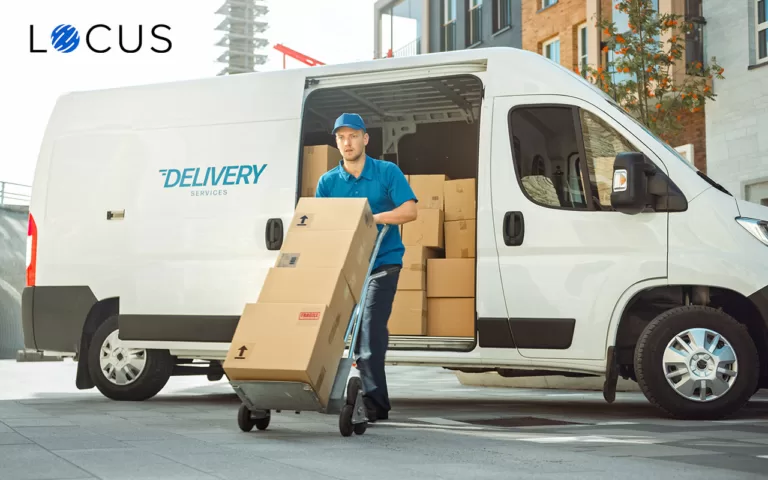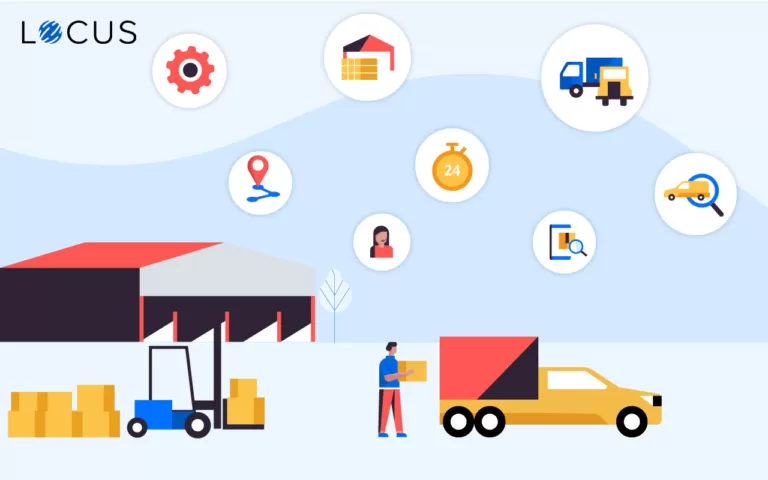Supply Chain Optimization
Building Supply Chain Resilience in Uncertain Times
Mar 30, 2021
9 mins read
Authors: Gaurav Shetty and Vignesh J

Ever Given. Suez Canal.
These two words have been dominating the news cycle for the past week. But just to refresh your memory, here’s a quick recap.
The 400m-long (approx.1,300 ft), 200,000-tonne vessel Ever Given, operated by a Taiwanese company Evergreen Marine, ran aground on Tuesday morning (March 23) amid high winds and a sandstorm. It thus blocked the Suez Canal and set in motion a series of unexpected events.

#SuezCanal
The approx. 120 mile Suez Canal connects the Mediterranean Sea to the Red Sea and facilitates direct shipping between Europe and Asia. It has around 50 ships passing through it every day and accounts for 12% of world trade, according to reports. And just to put the Ever Given size in perspective— it is longer than the Eiffel tower and bigger than three soccer fields. So, in short, it is huge.
This blockage led to a ‘traffic jam’ in the seas and according to various estimates around 150-200 large container ships, carrying oil and gas, grain, and other commodities are stuck at either end of the canal. Moreover, this is making other ships take the longer route around the Cape of Good Hope in South Africa, adding about a week to two weeks to their journey, which will push up costs.

The ‘numbers’ of this incident don’t make a pleasing read.
The ‘Suez jam’ is holding up an estimated $9.6bn (£7bn) of goods each day – or $400 million an hour – according to data from Lloyd’s List. Another estimate from the German insurer Allianz predicts that this blockade could potentially cost global trade $6 billion- $10 billion a week. Also, every additional week this jam continues could result in 0.2 to 0.4 percentage points off the annual trade growth.
Though recent news (as of early hours March 29) says that the Ever Given has been successfully re-floated, the ‘traffic jam’ it has caused is still on. It is not clear when the canal will be ready for passage again.
#RippleEffects
Think about it, a vessel stuck in the Suez Canal is causing ripple effects across industries and continents. Butterfly effect, some might say. Maybe it is. But, what this event really underlines is—the dire need for systems to be put in place to build supply chain resilience.
Supply chain resilience is no longer a term that is spoken about at C-Suite meetings in large conglomerates. It is now a dire necessity. One cannot simply afford to be a fence-sitter anymore. Over the past year, with the Covid-19 pandemic wreaking havoc on the world economy, it is becoming increasingly clear that you cannot look at supply chains in isolation. Everything is interconnected.
So, what does one do in such a situation? Should one just accept the fact that one will always get blindsided because these black swan ‘events’ cannot be controlled and move on and be ready to tackle the business impact or should one build systems to increase visibility and resilience in the supply chain?
We’d recommend that you choose the latter. But how exactly do we counter such unexpected events?
Maybe a little recent history dive might put things in perspective. Remember the word ‘ripple effects’.
#Covid-19 pandemic: What it has taught the supply chain world and why it matters
Covid-19 has exposed multiple long-standing vulnerabilities and risks among the global supply chains. For some companies, it was a warning to relook into how their supply chain was organized, while for others it was an opportunity to focus on innovation and growth.
It has been undisputed that the pandemic demonstrated the power of a connected supply chain, visibility into the same, and the advantage a company will have through predictive data analytics. As Deloitte points out, it is the organization’s ability to “anticipate, sense and respond to unexpected events” that minimizes impacts during an event like Covid-19.
Despite the popular opinion that Covid-19 disrupted the global supply chain on all fronts, Yossi Sheffi, director of the MIT Center for Transportation and Logistics, writes that the Covid-19 pandemic did not really break the global supply chain, but has simply revealed the underlying weaknesses and has accelerated the changes that were already underway. With changing customer expectations, latency in adapting to the inevitable changes costs more money in a post-pandemic world than ever before.
So, why are the present supply chains ‘weak’ aka ‘traditional’?
Traditional supply chains were linear in nature with discrete progression between the phases of the supply chain – design, plan, make, and deliver. However, with time, there has been a change in how markets operate, and this has given rise to a more dynamic and interconnected supply chain.
So, when a technology investment is done in isolation, it seeks to optimize one node of the entire network without considering the ecosystem as a whole – this does not really help. Neither is it the best practice since supply chains are inherently connected end to end despite how we view it. The Covid-19 pandemic has accelerated tech trends that have roots in improving connectedness – between people, systems, and information.
Connectedness and achieving end-to-end visibility is identified to be a necessity for any supply chain – be it a pandemic or a traffic jam in the middle of the sea. Here, we hark back again to ‘ripple effects’.
It is all connected.
Covid-19 + Ever Given + other unexpected supply chain issues= Long term impact on customers
With the world slowly limping back to some kind of normalcy thanks to vaccination programs across the globe, there is certainly a surge in demand. But, sadly companies might not be fully equipped to cash in on this demand surge. Supply chains aren’t completely ready yet as they are still recovering from the shocks caused by the pandemic and incidents like the blockage only make it worse.
Companies are dealing with longer lead times, fluctuating inventories, and ever-increasing customer demand. As the world opens up more and more, these issues will become more pronounced. Everything from automotive, e-commerce, furniture, to even instant coffee and toilet paper is/will be affected.
Our supply chains are so global and interconnected that ‘everything in stores’ might be impacted, according to experts.
This lack of control over the supply chain, coupled with the changing expectations from the market would put any company at a disadvantage.
Building resilience is the only way out of this very grim situation.
#FutureProof your supply chain
Before we go to the how, we first need to understand what resilience really means. Supply chain resilience is the ability of the supply chain to be prepared for unexpected/unforeseen risk events like the Suez Canal jam or the Covid-19 pandemic and returning back to its original state or a better more desirable state so that the market share, customer service, or the brand’s image doesn’t get impacted.
There are two major aspects to supply chain visibility and resilience:
- Connection (integration) between systems that sit at different nodes of the supply chain and an end – to – end data flow within the systems
- Establishing communication within the supply chain involves collecting data from the physical assets on the ground (or sea) ( i.e. through Electronic Data Interchange or EDI systems, GPS devices, sensors, etc.) and ensuring that there is a seamless data flow between systems.
- Analytics for informed decision making
- An organization moves a step ahead from the competition when there is not just visibility, but the ability to predict risks through the collected data points (predictive and prescriptive analytics). As Thomson Reuters notes, data analytics can improve the efficiency of supply chains by “validating data; detecting anomalies; benchmarking operations; allowing for mobile reporting and visibility into global logistics’ offering real-time route optimization, improved demand forecasts, and inventory management”.
Supply Chain Executives need to ask the following questions to ensure that they can build a more resilient supply chain:
- Are our systems able to visualize the physical supply chain network? Are we able to locate our assets, goods, and resources in real-time? (Remember, this visibility should be available even for the smallest part of your product)
- Do we have a digital twin of our supply chain to identify vulnerabilities and then accordingly optimize it by leveraging advanced techniques?
- Are we able to ensure that all our systems in the supply chain are interconnected?
- Are we viewing the supply chain in silos or as one single network with interconnected value components?
- Are our logistics operations optimized – Are we leveraging new-age technologies and techniques to plan, optimize, schedule, and execute (track and trace) our day-to-day operations?
Digitization of the supply chain was deemed to be sufficient even a few years ago. However, in these present times, digitization is necessary, but not sufficient. On one side, there are legacy solutions that help you digitize your entire supply chain, but they do not leverage advanced technologies like Artificial Intelligence to help you make decisions. A solution that gives you real-time visibility on your orders and resources, advanced analytics for better decision making, optimal planning and execution, seamless integration with other systems would be the much-needed panacea in these uncertain times.
It is indeed time to future proof your supply chain. It is now or never!
Locus automates real-world decision-making in supply chain & logistics with its proprietary knowledge graph and acts as the digital supply chain officer for enterprises. Check out our products here.
References
- https://www2.deloitte.com/us/en/insights/focus/industry-4-0/supply-chain-future-post-pandemic.html
- https://sheffi.mit.edu/new-abnormal
- https://www2.deloitte.com/us/en/insights/focus/industry-4-0/digital-transformation-in-supply-chain.html
- https://www.thomsonreuters.com/en-us/posts/corporates/data-analytics-supply-chain-management/
- https://mitsloan.mit.edu/ideas-made-to-matter/post-pandemic-supply-chains-retool-a-new-abnormal
- https://epsnews.com/2021/03/23/supply-chain-visibility-is-critical-to-post-pandemic-growth/
- https://www.forbes.com/sites/forbesfinancecouncil/2021/01/25/the-role-of-supply-chain-technology-post-pandemic/?sh=436c87b3da92
- https://www.bloomberg.com/news/articles/2021-03-26/ikea-to-caterpillar-hit-by-suez-blockage-in-growing-trade-crisis
- https://www.bbc.com/news/world-middle-east-56538653
- https://www.businessinsider.in/retail/news/from-toilet-paper-to-coffee-here-are-some-of-the-products-that-could-soon-be-in-short-supply-because-of-the-suez-canal-blockage/articleshow/81712345.cms
- https://www.nbcnews.com/business/economy/massive-container-ship-blocking-suez-could-delay-shipments-raise-gas-n1261950
Related Tags:

Retail & CPG
How to Optimize Permanent Journey Planning (PJP) in FMCG and Retail Supply Chains
Revenue is driven by a number of different factors in retail and FMCG markets — constantly evolving customer expectations, rising market competition, omnichannel trends, location demographics, and the effectiveness of supply chain elements, especially timely and effective distribution of goods to retail outlets from where the end customer buys the products. Typically, this is how […]
Read more
Supply Chain Optimization
What Is Network Optimization? Why Is It the Need of the Hour?
With the rising customer expectations, delivery businesses find it challenging to budget their logistics operations. Handling customer demand and balancing costs is just a double edged sword that needs more attention. A small glitch in either of these can lead to poor delivery experience, increasing costs and loss of revenue. The supply chain costs kept […]
Read moreMOST POPULAR
EDITOR’S PICKS
SUBSCRIBE TO OUR NEWSLETTER
Stay up to date with the latest marketing, sales, and service tips and news


Building Supply Chain Resilience in Uncertain Times